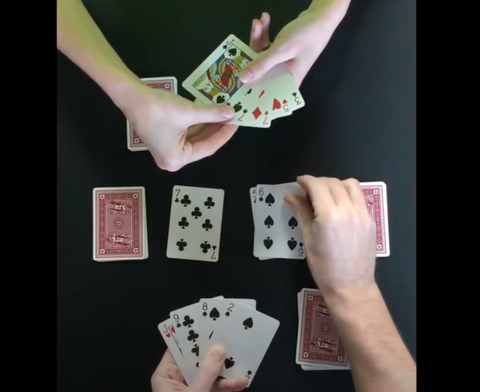For many, playing speed is an elusive skill that seems to defy comprehension. Whether you’re a seasoned musician or just starting to explore the world of music, the ability to play fast with accuracy and precision is a highly desirable one.
However, it can be incredibly challenging to know where to start and how to develop this skill effectively. In this article, we will delve into the intricacies of how to play speed, providing you with a step-by-step guide and practical exercises that will help you unlock your musical potential.
So, grab your instrument, get ready to push your limits, and let’s embark on this exciting journey together!
How to Play Speed: A Guide for Beginners

Understanding the Basics
Speed is a fast-paced card game that can be enjoyed by people of all ages. It’s a simple game to learn, but it can be challenging to master. The objective of the game is to be the first player to get rid of all of their cards.
Speed is played with a standard deck of 52 cards. The cards are dealt evenly among the players, and each player places their cards face down in a pile in front of them. The top card of each player’s pile is turned face up, and the player with the highest-ranking card goes first.
On your turn, you can play any card from your hand that matches the rank or suit of the card on top of the discard pile. For example, if the top card on the discard pile is a red 7, you can play any red 7, any other 7, or any other red card.
If you can’t play a card, you must draw a card from the draw pile. If the card you draw can be played, you can play it immediately. Otherwise, your turn ends.
Winning the Game
The first player to get rid of all of their cards wins the game. If two or more players get rid of their cards at the same time, they tie.
Tips for Beginners
Here are a few tips for beginners:
- Pay attention to the cards that have been played.
- Try to remember which cards are still in the deck.
- Don’t be afraid to draw cards if you can’t play a card.
- Practice makes perfect!
Advanced Techniques for Speed Playing
Alternate Picking and Economy Picking
These techniques involve using alternate strokes with the picking hand to create a fluid and efficient motion. Alternate picking involves alternating between upstrokes and downstrokes, while economy picking minimizes unnecessary hand movements by using the shortest picking motion possible.
Practice these techniques with scales and exercises to improve coordination and muscle memory.
Fingerpicking
Fingerpicking involves using the fingers to pluck strings individually. This technique is often used for acoustic guitar and requires precision and dexterity.
Start with simple patterns and gradually increase the speed and complexity of your fingering.
Sweep Picking
Sweep picking involves rapidly picking across multiple strings in a fluid motion. This technique is often used for lead guitar and requires a high level of coordination and dexterity.
Practice sweep picking patterns with a metronome to improve timing and accuracy.
Physical and Mental Training
Finger Strength and Dexterity
Strong and dexterous fingers are essential for speed playing. Exercise your fingers with finger exercises, grip strengtheners, and by playing at increasingly faster speeds.
Regular practice will help build muscle strength and improve finger coordination.
Concentration and Focus
Speed playing requires intense concentration and focus. Practice in a quiet environment and eliminate distractions.
Use visualization techniques to see yourself playing at your desired speed and focus on maintaining a positive mindset.
Overcoming Plateaus
Identify Bottlenecks
Analyze your playing to identify technical or mental bottlenecks that are limiting your speed. Focus on these areas for improvement.
Consider taking lessons from a qualified instructor who can provide feedback and guidance.
Break Down Complex Pieces
Practice complex pieces in smaller sections and gradually increase the speed as you master each part.
This approach helps build confidence and improves muscle memory for the entire piece.
Interval Training
Alternate between playing at high and low speeds. Start with a short burst of high-speed playing, then slow down for a rest period.
Repeat this process, gradually increasing the duration of the high-speed bursts.